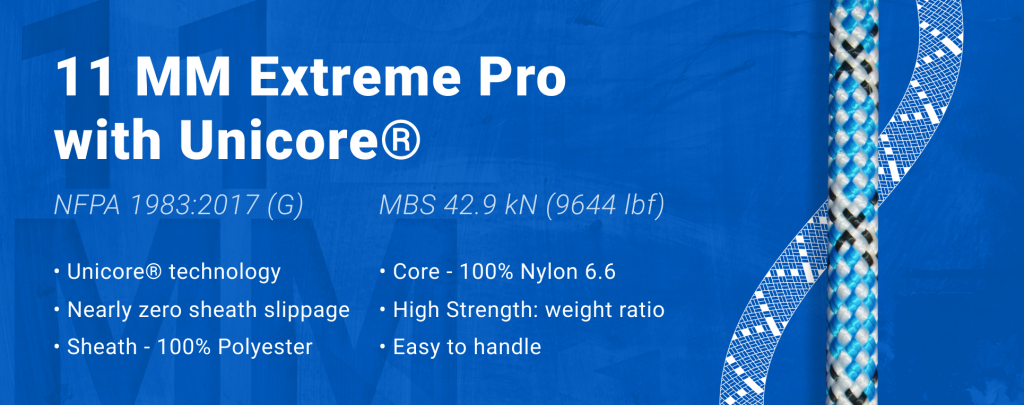Safety at Height|Standards and Compliance
NFPA 11mm G-Rope – Is It a Gimmick
With the advent of G rated 11mm rope there does seem to be a big push from many departments to move to these smaller diameters. There are a lot of advantages to using 11mm instead of 12.5mm, including a wider range of auxiliary equipment that works with this diameter, harmonization with professional rope access systems and methods being used in the field, and of course lighter weight and less cost.
That said, not all departments are leaping into making the transition so rapidly. For starters, it can be very costly to make this transition because, depending on what other equipment is being used, things like rope grabs and descenders must also be replaced at the same time. It is very important to ensure that all critical life safety components that are diameter dependent be matched to the rope diameter being used. If you are using bollard type descenders like the CT Sparrow, Skylotec Sirius, or Petzl ID, these are very diameter dependent and would need to be replaced when you go to 11mm. This is also true for rope grab devices such as the Grip and Rescucender. On the other hand, if you are using adjustable friction devices such as the brake rack, prusiks, etc, the same size device can be used on both diameters of rope. When it comes to prusiks, the 8mm diameter prusiks used by most rescuers on 12.5mm (1/2” rope) will also work on 11mm, but it does behave differently so – as with all cord-on-rope configurations – you should do your own testing/experiments specific to your application to make sure that the two are working together in the manner that you prefer.

As far as performance properties… to get a bit of perspective here we can take a step back and consider how we ever got caught up in the half-inch rope philosophy in the first place. It’s a simple story, really… in the early 1980’s the IAFF wrote a whitepaper that said a rope should be able to withstand a 2-person load of 600lbf with at least a 15:1 safety factor. In those days, we used laid ropes and it took a 5/8” or ¾” rope to get to 9,000lbf, and before you know it standards writers and rescue trainers were singing this tune.
Despite that first standard being only a few pages long, there were a lot of things in it that have perpetuated misinformation ever since. Things like having to discard rope after use, 15:1 safety factors, ½” rope, and more. Some of this was a result of limitations in materials and products in those days, but much was because the standards writers took the approach of being design restrictive rather than writing a performance based standards. In subsequent years since, standards writers have worked hard to try to un-do some of these misperceptions, and with each passing edition the standard seems to become less design-based and increasingly performance-oriented.
By the time the first NFPA 1983 standard was rewritten in the early 1990’s kernmantle was on the scene, and it only took a 1/2” rope to get to 9,000lbf MBS, so suddenly ½” became the magic diameter. In subsequent editions of the standard, as the fire industry began to better understand the quality and performance of true life safety rope, smaller diameters and lower strengths would be permitted… including 11mm rope for ropes used for lighter weights, and diameters as small as 7.5mm for personal escape.

In fact, 11mm (and lower) diameter ropes have been permitted in context of NFPA for over a decade, and have been used in mountain rescue, cave rescue, rope access, and industry for even longer. Some of these environments are extremely harsh
The durability, abrasion resistance, flexibility, and stretch of an 11mm rope are all engineered features, just as they are in a 12.5mm. I can show you 11mm ropes that are more durable than a 12.5mm rope, and vice-versa, just depends on materials and construction.




Keylor Rojas Fernandez
Thank for This Loiu !and PMI